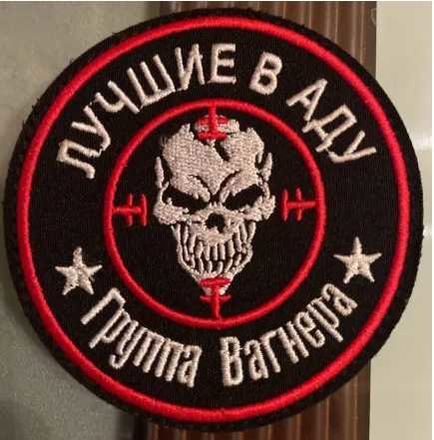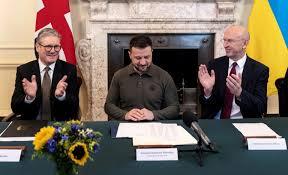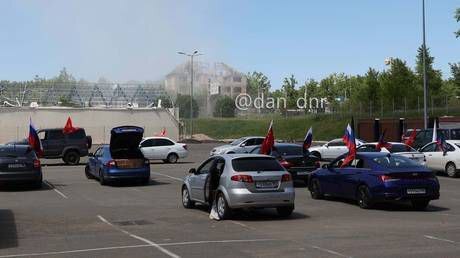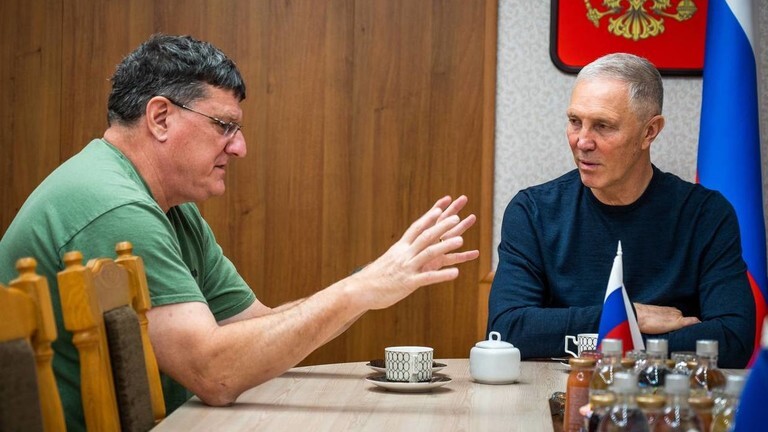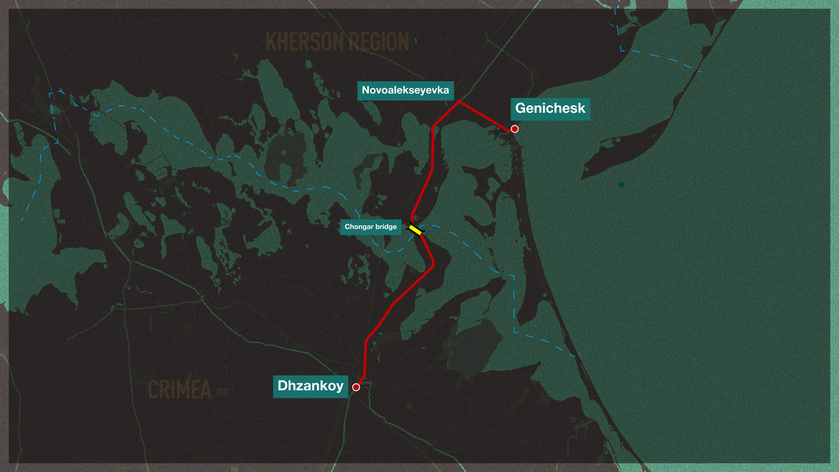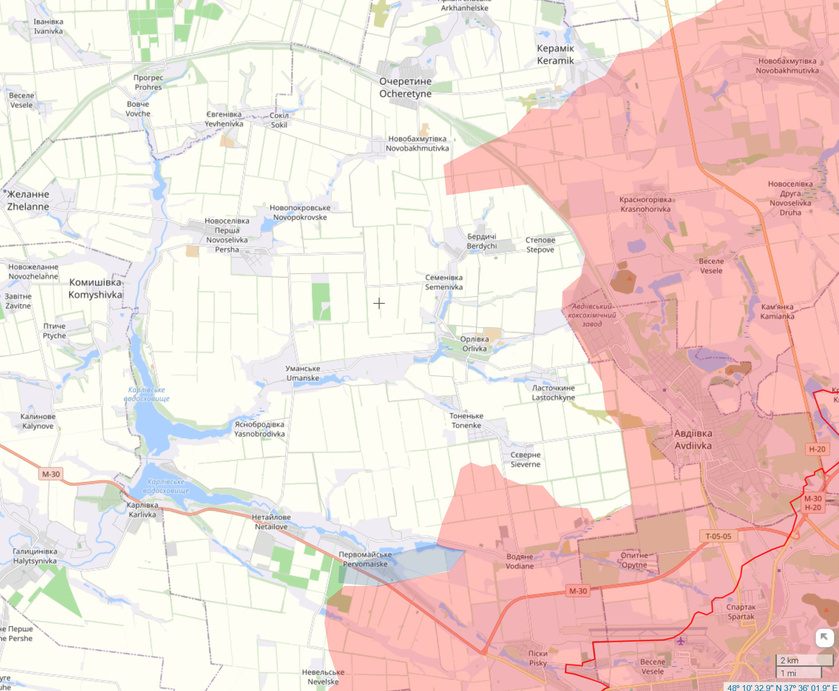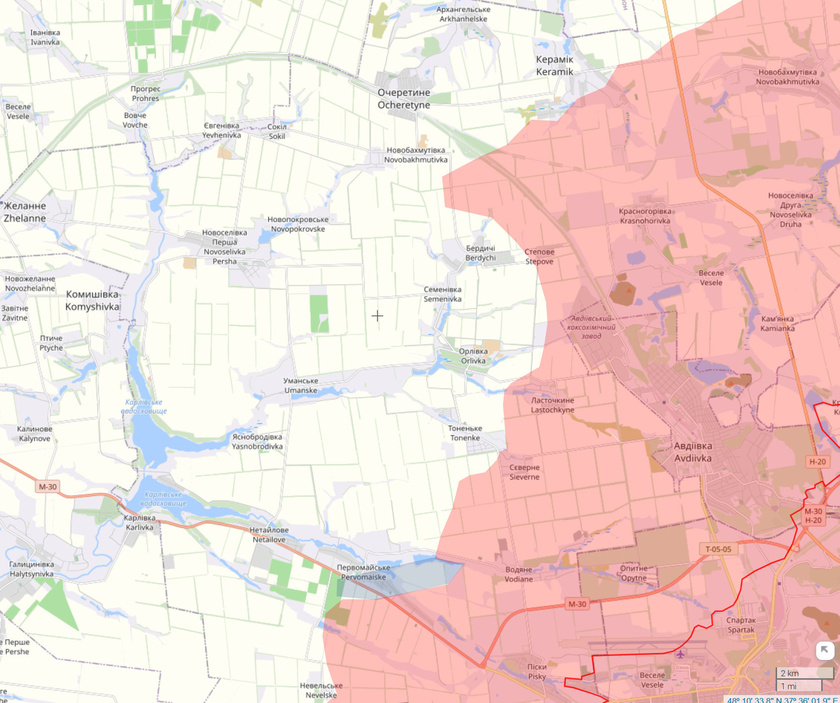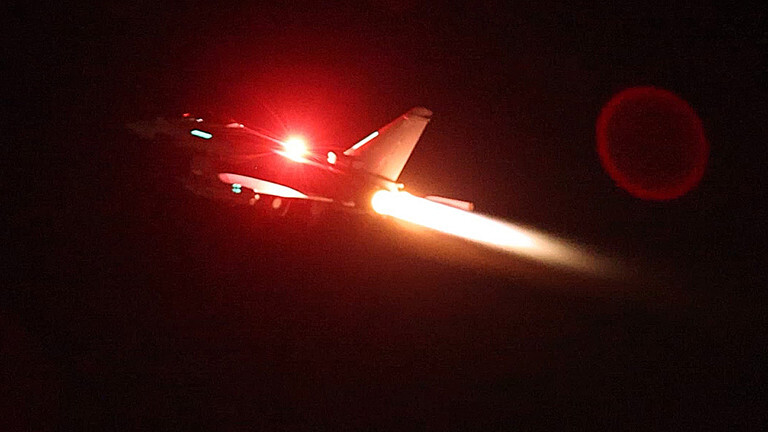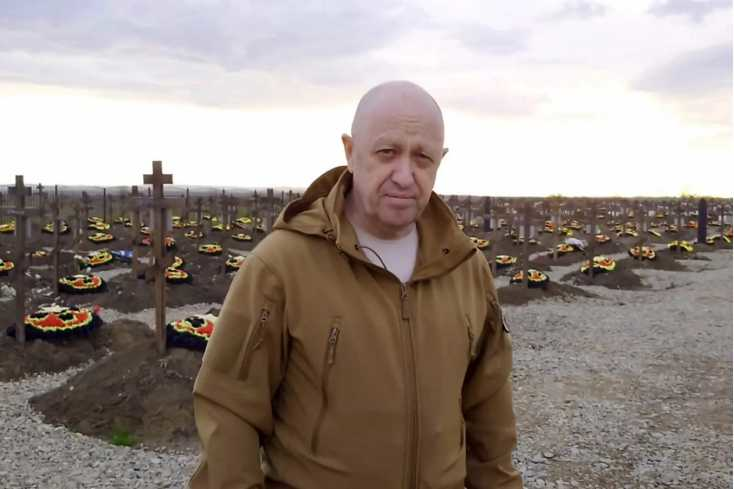
In the interests of full disclosure, I cannot say that I am an impartial observer when it comes to Wagner. I have met with Wagner fighters and leaders, and I have been deeply impressed with the organization’s professionalism, especially when it comes to military matters. I never met with Prigozhin, and as such, cannot comment on him from a personal perspective. I’m sure my words will touch a nerve with many in the Wagner organization. But my assessments are honestly held and derived from the same foundation of integrity that put me on their radar in the first place.
Yevgeny Prigozhin, the volatile yet personable director of the Wagner Group, a private military company which has a history of collusion with the Russian government on matters of extreme geopolitical importance, is dead. Prigozhin, along with six other members of Wagner and three non-Wagner affiliated flight crew, perished when the Embraer Legacy 600 business jet they were on crashed under mysterious circumstances near the western Russian city of Tver. Russian investigators have matched the DNA found on remains recovered at the crash scene with Prigozhin, bringing an end to speculation regarding his fate. While rumors are rife about the potential cause of the crash, and who or what might be responsible, at this juncture there is insufficient evidence to place specific responsibility.
Don’t tell that to Joe Biden, however. The US President, vacationing in Lake Tahoe, was asked by reporters to comment on news of Prigozhin’s passing. “I don’t know for a fact what happened,” Biden said, “but I’m not surprised. There’s not much that happens in Russia that [Russian President Vladimir] Putin’s not behind. But I don’t know enough to know the answer.”
The White House continued this pattern of back-hand blaming. “We have seen the reports,” National Security Council spokesperson Adrienne Watson said. “If confirmed, no one should be surprised. The disastrous war in Ukraine led to a private army marching on Moscow, and now—it would seem—to this.”
Russian Deputy Foreign Minister Sergei Ryabkov was quick to point out the undiplomatic nature of the Biden comments, noting that “it is not for the US president, in my opinion, to talk about such tragic events of this kind.”
I agree with Ryabkov—Biden has no business publicly commenting on the events surrounding the demise of Prigozhin—especially when he himself admits, “I don’t know for a fact what happened.”
At this juncture, no one does. The Russian investigation into the incident has just begun, and has yet to publicly report on any conclusions, interim or otherwise.
Biden’s comments, however, along with those of his National Security Council, provide interesting yet disturbing insight into the tendency on the part of the Biden administration to jump to conclusions based upon a dearth of data and preponderance of prejudice. “I don’t know” combined with “there’s not much that happens in Russia that Putin’s not behind” represents a disturbing pairing of ignorance—the first derived from the lack of fact-based information, the second from the absence of intellectually-driven analysis. Biden simply drew a conclusion based upon the same Russophobic foundation of belief that prompted him to declare during a March 2021 interview that he believed Putin to be a “killer.”
No evidence.
No analysis.
Pure Russophobia.
Let’s look at what we know about the August 24 plane crash that took the life of Prigozhin. A great deal has been made about Prigozhin’s role in the abortive Wagner insurrection that took place two months ago, which saw Prigozhin and his senior military deputy (and the founder of what became the Wagner Group), Dmitry Utkhin, lead thousands of Wagner fighters on what they called the “March of Justice,” a bold gambit to oust the Minister of Defense, Sergei Shoigu, and the Chief of the Russian General Staff, General Valery Gerasimov, on grounds of corruption and incompetence.
This gambit collapsed when it became clear that the vast majority of Russian officials, including important military, political, and business leaders Prigozhin was hoping would rally to his cause, viewed the “March of Justice” for what it was—an illegal armed insurrection intended to interfere with the constitutionally-mandated government of Russia, a reality reflected in the fact that Prigozhin and the insurrection participants were charged under Article 279 of the Russian Criminal Code regarding armed rebellion.
While Prigozhin and a detachment of Wagner fighters occupied the headquarters of the Southern Military District, responsible for overseeing combat operations against Ukraine that were ongoing at the time (Ukraine had launched its long-awaited counteroffensive in early June), Utkhin led a column of between 4-5,000 heavily armed Wagner forces north along the M4 Highway toward Moscow. The Wagner column was engaged by Russian military helicopters, killing and wounding several Wagner fighters. Wagner’s mobile air defense systems, in particular the Pantsir (ironically leased to Wagner by the Russian Ministry of Defense), responded by shooting down several unarmed Russian military helicopters and an Il-22 command and control aircraft, killing 13 Russian servicemen.
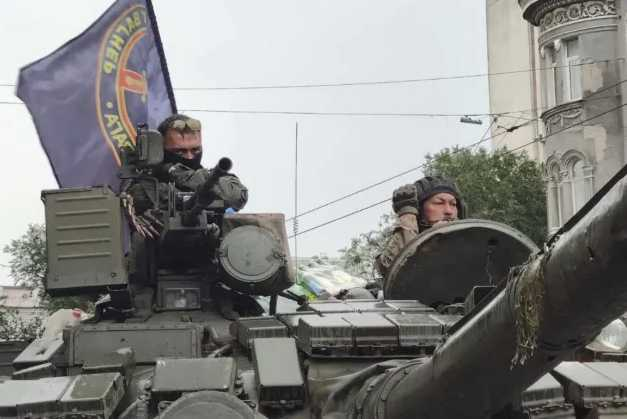
Russian authorities have treated the deaths of these Russian military personnel as murder.
These homicides, when combined with the treason that was manifested in the so-called “March of Justice,” made Yevgeny Prigozhin a marked man. The list of people, countries, agencies, governments, and institutions that wanted him dead became even longer.
And he just lost the protection of Russia’s most powerful and influential person, Vladimir Putin.
This makes the notion of Putin, or a Putin loyalist acting on his own accord, avenging the stain on Russian honor that Prigozhin had perpetrated, appear to be a logical cause of the Wagner chief’s demise.
Putin’s well-known aversion to those who betray him or Russia, however, does not automatically translate into Putin being involved in any aspect of Prigozhin’s death—far from it. Anyone who has studied the words and deeds of the man who has, in one form or another, been at the helm of Russia for nearly 23 years, knows that Valdimir Putin is not someone prone to precipitous action. Every word he utters, every action he directs, is the byproduct of a process involving structured consultation and deliberation.
Moreover, the decisions taken by the Russian President are never about shaping perception for personal political gain, but rather exclusively about furthering the best interests of the Russian nation and its people. This last point is particularly important, given the tendency in the United States and elsewhere in the collective West to project onto the Russian leader the motivations and ambitions of our own political leaders, who are often willing and able to manipulate events in a way that accrues political favor and advantage, even at the expense of their respective constituencies.
Speaking about Prigozhin following the news of the plane crash, Putin said he’d known the head of Wagner “for a very long time,” and that he was “a talented man, a talented businessman.” The next comment from the Russian President, however, underscored the tension that existed between the two men. “He was a man of difficult fate, and he made serious mistakes in life, and he achieved the results needed both for himself and when I asked him about it—for a common cause, as in these last months.”
Prigozhin’s “serious mistakes” included a criminal past for which he served time in a Soviet prison, as well as the crimes he was responsible for through his “March of Justice.” But it also included his involvement in shadowy business dealings, both as part of Wagner, as well as through other commercial entities in his expansive business empire. Through Concord Management, his original catering company, Prigozhin had secured contracts worth hundreds of millions of dollars to provide meals to soldiers, students, and other entities. At the time of his death, it is believed Prigozhin was being investigated on allegations of financial impropriety involving these contracts.
Prigozhin also ran a multi-billion-dollar enterprise linked to the security work of Wagner in the Middle East and Africa, where in exchange for services provided, Wagner (Prigozhin) received concessions involving oil, gas, mineral wealth, and agricultural products. If Prigozhin had yielded to Ministry of Defense demands to subordinate Wagner’s Ukraine operation to Russian governmental authority, these Middle Eastern and African concessions would have likely been allowed to continue without interference from Russian authorities. However, in the aftermath of the June 23-24 insurrection, the Russian government moved to separate Prigozhin from these concessions, taking control of the multitude of companies and front-companies used by Wagner to manage and oversee these operations.
President Putin made every effort to effectuate a businesslike divorce between Wagner and Prigozhin. On June 29—a mere five days after Prigozhin’s act of betrayal—Putin met with the Wagner chief and 35 of his top commanders in the Kremlin, where the future of Wagner was discussed. Putin made it clear that Wagner should select a new leader (Putin’s choice was Prigozhin’s Chief of Staff, Andrei Troshev, callsign “Grey Head,” a highly-decorated former special forces officer in the Russian Ministry of the Interior who was awarded the title “Hero of Russia” for his service with Wagner in Syria), and that it was his preference for Wagner to sign a contract with the Ministry of Defense which allowed it to preserve its unique identity and capabilities. While most of the assembled Wagner commanders were inclined to accept Putin’s proposal, Prigozhin and Utkhin (founder of the organization) rejected it, and the Wagner commanders, fiercely loyal to the company, did not contradict their boss.
Prigozhin and Utkhin were exiled to Belarus, and Wagner’s military operations on Russian soil were shut down. The 25,000 Wagner troops billeted in Lugansk turned in their weapons to the Russian Army, and dispersed, either driving to their new home in Osipovichi, Belarus, where a massive tent city had been constructed, or heading home, on leave. Very few Wagner fighters signed contracts with the Russian Army. The Wagner training facility in Mol’kino, in the Krasnodar region of southern Russia, has been closed, as has its recruitment centers throughout Russia. Wagner’s shiny new headquarters in Saint Petersburg, Wagner Center, remains open and operating, an indication that Wagner’s non-Ukrainian operations in Syria, Africa, and elsewhere are still functioning.
In late July, President Putin convened the Russian-African Summit, welcoming heads of state and their designated representatives to Saint Petersburg. One of the goals of this summit was to facilitate Russian diplomatic, economic, and security entrée into the African continent. Africa has emerged on the Russian geopolitical radar as a continent where the past sins of European colonialists and American unilateralists combine to provide an entrée for Russia by exploiting the history of goodwill that exists among African nationalists regarding the support provided by the former Soviet Union to their respective independence movements. The Russian president, together with his foreign and defense ministries, crafted a balanced policy built upon improved economic opportunity and increased security assistance. Wagner’s past independence of operation on the African continent was no longer compatible with the new Russian approach, which was geared more towards comprehensive, mutually supportive and carefully coordinated actions than the ad hoc approach which was the trademark of Wagner’s operational model.
Prigozhin, whose African businesses, according to some sources, were being dismantled around him, was advised to stay clear of the Russian-African Summit. Instead, Prigozhin set up camp in Saint Petersburg, conducting what amounted to a shadow summit, meeting African leaders with whom he had good relations to rebuild his economic empire. This act of insubordination prompted the Russian government to accelerate its takeover of Wagner’s African operations, with the Ministry of Defense aggressively pressuring Wagner commanders to sign contracts binding them to Russia.
Prigozhin and Dmitry Utkhin, back in mid-July, had met with and addressed thousands of Wagner fighters who had assembled in their new base outside of Osipovichi, Belarus. There Prigozhin continued his verbal attack on the Russian military command. “What is happening now at the front,” Prigozhin said, “is a disgrace,” later adding that Wagner might return to the Ukrainian theater of operations “at the moment when we are sure that we will not be forced to put ourselves to shame.” Instead, Prigozhin said, Wagner would be “going on a new path to Africa.” Prigozhin was joined by Utkhin, who told the Wagner troops that their deployment in Belarus was “the beginning of the greatest work in the world, which will continue very soon.”
One of Prigozhin’s first major tasks, post-coup, was to affect the rotation of hundreds of Wagner fighters who had signed six-month contracts for service in Africa, only to see their service extended another six months because of the demands placed on Wagner by the Ukraine conflict. But even as this rotation was being carried out, the terms and conditions of the work that would be done by Wagner in Africa was undergoing a transition.
At the time Prigozhin’s plane crashed, he had just returned from a whirlwind trip to Africa, where he flew to the Central African Republic and met with government officials as well as contacts from the Rapid Support Forces (RSF), a Sudanese paramilitary organization currently involved in a Civil War with the Sudanese government. Wagner had a long history with both the CAR government and the RSF, and it is believed that Prigozhin was seeking to nail down new contractual agreements in the face of the concerted efforts of the Russian government to bring the Wagner operations in Africa under the umbrella of the Russian Ministry of Defense.
Prigozhin then flew to Mali, where he conducted similar negotiations with the Mali government as well as representatives from Niger who had expressed an interest in Wagner coming to the assistance of the newly installed Junta of military officers who had seized power in a coup back in July. It was in Mali that Prigozhin published a video on a Wagner-affiliated Telegram channel showing him clad in desert camouflage and sporting an automatic rifle and other accoutrements of combat. In the video, Prigozhin declared that he was once again recruiting “heroic warriors.” Wagner, Prigozhin declared in the video, “makes Russia even greater on all continents, and Africa—even more free,” concluding that Wagner forces in Africa were “making life a nightmare for ISIS and al Qaeda and other bandits.”
On the surface, there was no logical reason for Prigozhin to produce and publish this odd video—Wagner recruiting centers had been closed in Russia, and Wagner had thousands of fighters who had been put on extended vacations due to a lack of work. As had been the case with previous videos produced by Prigozhin during the fighting in and around Bakhmut earlier this year, the purpose of the Mali video appeared to be part of a public relations campaign that Prigozhin was running against the Ministry of Defense, an effort to win over public support for the Wagner brand as a private military company before it was swallowed up by the Russian military.
Ramzan Kadyrov, the Head of the Chechen Republic and a staunch supporter of Russian President Vladimir Putin, issued a statement following Prigozhin’s death. “We’ve been friends for a long time,” Kadyrov said, before adding that recently Prigozhin “either did not see or did not want to see the full picture of what was happening in the country.”
Kadyrov stated that he “asked him [Prigozhin] to leave his personal ambitions behind in favor of matters of paramount national importance. Everything else,” Kadyrov said, “could be dealt with later. But that’s just the way he was, Prigozhin, with his iron character and his desire to get what he wanted right here and now.”
When one reflects on Prigozhin’s last days, Kadyrov’s words resonate strongly. Prigozhin, it seemed , could not “leave his personal ambition behind,” but rather sought to “get what he wanted right here and now.”
On the airplane with Prigozhin and Utkhin was Valery Chekalov, a long-time associate of Prigozhin who helped run the business side of Wagner’s vast empire. It was Chekalov who helped manage the network of companies, some real, some fake, involved in Wagner’s foreign economic ventures, including the profitable oil, gas, and mineral businesses Wagner operated in Syria and Africa. Chekalov would have played a critical role in negotiating any new deals with the CAR, RSF, Mali, and Niger. Together, Prigozhin, Utkhin, and Chekalov represented the brain trust of Wagner’s last desperate effort to salvage its independence of operations in Africa.
The four other Wagner personnel onboard the aircraft—Yevgeny Makaryan, Alexander Totmin, Sergei Propustin, and Nikolai Matuseiev—were all long-time veterans of the organization with extensive combat experience in Syria and Africa. None of them were senior enough, however, to warrant a seat on Prigozhin’s plane in their own right—there were far more senior Wagner fighters who were apparently flying on a second Embraer 600 jet flying with Prigozhin’s plane when it went down. In all likelihood these men comprised the personal protection detail assigned to Prigozhin, Utkhin, and Chekalov.
It is this last detail—the existence of a dedicated personal protection detail composed of long-serving, combat-tested Wagner veterans—which mitigates against theories about a bomb being placed onboard Prigozhin’s aircraft. Given the fact that Prigozhin would have delayed finalizing a specific manifest for each aircraft until the last moment—out of an abundance of precaution—it would be virtually impossible for any would-be assassin to have known far enough in advance on which aircraft any such device would need to be placed. Moreover, Prigozhin’s security detail would have not only physically secured the aircraft from any unauthorized access, but also conducted a security sweep of the aircraft prior to Prigozhin boarding the aircraft.
This does not preclude any foul play—mistakes are made, and when one has assembled the list of enemies that Prigozhin, Utkhin, and Chekalov had, any mistake becomes a potential window of opportunity to be exploited by those whose intent is to bring harm to the targeted person(s).
For those who believe Prigozhin was targeted by the Russian government, the timing of the action needs to be addressed. Given the broad monopoly that the Russian government has on violence, the fact is Prigozhin could have been killed at any time, and anywhere. As such, why would a Russian government-affiliated entity decide to kill Prigozhin when Russia had achieved a major diplomatic victory at the BRICS summit in South Africa, where the economic forum that helps empower Russia’s main foreign policy objective of promoting a multi-polar world that challenges American global hegemony had just agreed to expand its membership by six new members? Prigozhin’s death sucked the oxygen out of the news cycle, killing every other story. Such a result could be easily anticipated, and as such avoided simply by carrying out the act at a time that did not disrupt Russian national interests in such a manner.
Which clearly did not happen.
Some have speculated that Prigozhin’s plane was brought down by a foreign intelligence service. Putting aside the issue of competency (the CIA has shown a particular inability to engage in successful human intelligence operations inside Russia over the past decade), the fact is that such a high-profile assassination on Russian soil constitutes a clear act of war, and more than likely would be viewed by the Russian government as such. No matter how hated Prigozhin was in the ranks of the CIA, MI-6, or French intelligence, the risk-benefit analysis that would accompany any decision for such a major undertaking would overwhelmingly fall into the “do not attempt” category.
This leaves unofficial Russia as the last remaining culprit—competing oligarchs, organized crime, and other shadowy organizations and individuals with whom Prigozhin would have interacted with over the years. Prigozhin was actively seeking investors in his many businesses, and some of the money he attracted may have been sourced to entities which might take violent umbrage at the idea of losing their money, something which, given the Russian government’s dismantling of the Wagner economic empire that was ongoing at the time of Prigozhin’s death, was a distinct probability. Likewise, Prigozhin’s personal ambition may have put him in conflict with power structures inside Wagner who may have resented Prigozhin’s insurrection and the loss of face that followed.
All the above scenarios require a certain amount of conspiracy, some of which is less believable than others. Occam’s razor holds that the solution to a problem that has the smallest possible set of elements is more likely than not the likely solution. Getting a bomb implanted on a highly secured aircraft at the last second requires many elements to come together. However, in the case of Prigozhin’s security detail, the “bomb” could have been placed on the aircraft void of any conspiracy—one need only consider the arms, munitions, and pyrotechnics/explosives such a detail would carry with them. The possibility of an error being made while loading these weapons, and as such creating the possibility of an accidental explosion while the aircraft was airborne, cannot be discounted.
In any event, the competent authorities within the Russian government are investigating the cause of the accident which caused Prigozhin’s plane to crash, killing him, six senior Wagner members, and the three-person flight crew. Once the findings of this investigation are released for public scrutiny, a more fact-based discussion can ensue.
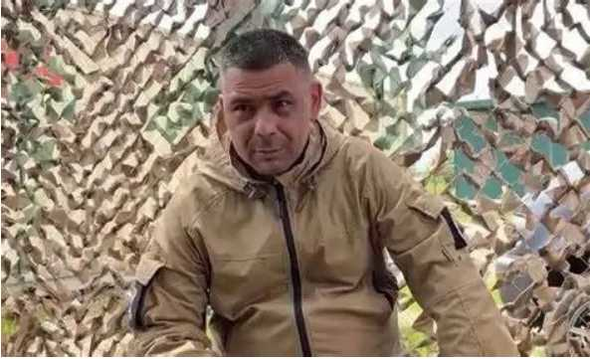
As for the future of Wagner, it appears than the Council of Commanders which oversees the military aspects of the organization’s work has implemented a succession plan which has put Anton Yelizarov (call sign “Lotus”), a former paratrooper and special forces officer who was made a “Hero of Russia” by Putin for his service with Wagner in Syria, and who has extensive additional combat experience with Wagner service in Africa and against Ukraine, in command. Velizarov will be leading an organization whose ranks are filled with legendary fighters possessing colorful call signs, like “Ratibor,” Zombie,” and “Mexhan,” men who have been decorated for courage on the field of battle and who have proven their loyalty to Russia time and time again.
The founding document of Wagner dated May 1, 2014, and signed by Prigozhin and many of Wagner’s top military commanders, holds that the organization remain loyal to Russian President Vladimir Putin and never harm the interests of Russia. While such an oath, when set against the insurrection of June 23-24, 2023, appears to be empty, the hardcore Wagner members would counter, as did Prigozhin, that Wagner was staying true to its mission by opposing what it viewed as corruption and incompetence in the Russian Ministry of Defense. Such a conclusion, however, must be balanced by the reality that Wagner was a business which, once the Donbas had been incorporated into Russia, that had lost its legal foundation. Prigozhin’s actions in rallying Wagner to move on Moscow were self-serving and did much to smear the solid reputation of the commanders who had sacrificed so much building the stellar reputation Wagner had accrued as a combat organization.
Wagner will never be what it once was—a private military organization capable of acting independently of the Russian government regarding both business deals and military operations. Going forward, Wagner, under its new leadership, will find its business activities truncated, and its military missions under the control of the Russian Ministry of Defense. The key to Wagner’s future success or failure will be the extent to which Wagner and the Russian government can retain the unique character of the fighting forces, both in terms of attitude and capability. There is no guarantee of success, and many question whether Wagner can continue to function as it once did without the charisma and talents of Prigozhin, Utkhin, and Chekalov.
My assessment is that Wagner will be a major player in Russia’s growing involvement in Africa, and that under the leadership of “Lotus,” “Ratibor,” “Zombie,” “Mexhan,” and others, the Wagner fighters will continue to build upon the tradition of military excellence in the service of Russia that had been established while Prigozhin was at the helm. “We will all go to hell,” Prigozhin was fond of saying. “But in hell, we will be the best.”
Wagner was, is, and will be “the best in hell,” a eulogy that Prigozhin would have wanted, and which he deserves.
